 November 5, 2009 John E. Ross, KD8IDJ, Editor
| ||||||
+ Available on ARRL Audio News + Public Service: Ham Radio Operators Assist in Catalina Island Rescue
+ ARRL Recognizes: George E. Smith, AA2EJ, Wins Nobel Prize
Around 5:30 on the morning of October 6, George E. Smith, AA2EJ, of Barnegat, New Jersey, got a phone call that changed his life: He had just found out he had won the Nobel Prize in Physics for 2009 "for the invention of an imaging semiconductor circuit -- the CCD sensor." Smith will share the prize money with two other recipients: Charles K. Kao, of Standard Telecommunication Laboratories in the United Kingdom and Chinese University of Hong Kong, and Willard S. Boyle, of Bell Laboratories. Each recipient will receive a diploma, a medal and a document confirming their share of SEK 10 million (about $1.4 million); Kao will receive 50 percent, while Smith and Boyle will each receive 25 percent of the monetary award. Kao was recognized by the prize committee for his "groundbreaking achievements concerning the transmission of light in fibers for optical communication." His discoveries paved the way for optical fiber technology, used for almost all telephony and data communication today. Boyle and Smith invented a digital image sensor -- the CCD -- that has become an electronic eye in almost all areas of photography. "My wife Janet, AA2EI, and I sailed around the world for 17 years," Smith told the ARRL. "While we were on our boat, we used Amateur Radio, especially in the South Pacific. Janet was the principal radio operator. With our radio, we could keep track of other boats in the area. Over in the Southwest Pacific, there are shore stations there that provide weather forecasts every day on the ham radio. We would listen for these, as it was such a tremendous help for us as sailors."
The CCD -- invented in about an hour over lunch when Smith and Boyle worked at New Jersey's Bell Labs -- was, according to Wired Magazine, the first practical way to let a light-sensitive silicon chip store an image and then digitize it. In short, it is the basis of today's digital camera. According to Wired, the "most amazing thing about the invention" is that Boyle and Smith came up with the design so quickly. With Bell Labs threatening to take the funds from their department and transfer the money to other research, Boyle had to come up with a competing semiconductor design. He got together with Smith, and within an hour, they came up with the idea and sketched it all out on a blackboard. "One morning in October, 1969," Boyle wrote on his Web site, "I was challenged to create a new kind of computer memory. That afternoon, I got together with George Smith and brainstormed for an hour or so on a new kind of semiconductor device, drawing a few sketches and equations on a blackboard. We called it a charge-coupled device: A 'CCD.' When we had the shops at Bell Labs make up the device, it worked exactly as expected, much to the surprise of our colleagues." When asked by the ARRL how he felt about winning the Nobel Prize, he exclaimed, "I feel great! Even though there's a lot of nonsense to go through with it, it's worth it and winning it does wonders for your ego. Aside from the initial shock and having to go through piles of mail, e-mail and returning telephone calls, I know that will calm down. As for the long-range future, I'm getting many invitations to give talks. Next year, I've been invited to speak at a major conference in Seoul, South Korea, another in Portland Oregon and another in Switzerland. I've been invited to France to give a talk, China, too. We need to sit down with a calendar and figure it all out. Having a Nobel makes a big dent in your lifestyle." Smith told the ARRL that he knew the CCD was under consideration for the Nobel Prize, "but we didn't know exactly if, or when, it would happen. Research that wins the Nobel is often done many years beforehand. In my case, this was 40 year old research. The Prize Committee wants to make sure the research has stood the test of time.
"Amateur Radio has always attracted individuals who want to understand and exploit nature's laws," fellow Nobel Laureate Joe Taylor, K1JT, told the ARRL. "These are essential characteristics for first-rate scientists, as well. The 2009 Nobel Prize in Physics honors the invention of an imaging semiconductor circuit -- the CCD sensor used in digital cameras, the Hubble Space Telescope and many other scientific and consumer devices. It was no great surprise to learn that one of the Laureates, George Smith, is also a radio amateur." Taylor was awarded the Nobel Prize in Physics in 1993 "for the discovery of a new type of pulsar, a discovery that has opened up new possibilities for the study of gravitation." Next month, Smith will travel to Stockholm, Sweden for the award ceremony on December 10. It is certain that his picture will be taken scores of times by the international media, made possible through the technology that he and Boyle pioneered. Click here for more information, including how a CCD works. + Operating: Fall Frequency Measuring Test This Month The W1AW Frequency Measuring Test (FMT) has taken several different formats over the past few years. This year, we return to the "classic" FMT -- measuring the frequency of an unmodulated carrier. Accurate frequency measurement is required of all hams for both regulatory compliance -- "stay in the band!" -- and operating convenience, particularly on the new digital modes. The W1AW FMT will run on November 12, 2009 at 0245 UTC (this is Wednesday evening, November 11, 2009 at 9:45 PM EST). It will replace any W1AW bulletin normally scheduled for that time. It is recommended that participants listen to W1AW's transmissions prior to the event to get an idea of conditions to see which band (or bands) will be best for measurement purposes. Read more here. + Look for the December QST in Your Mailbox
Advocacy: More Cosponsors for HR 2160 Earlier this week, two more Congressional Representatives -- Andre Carson (D-IN-7), and C.W. Bill Young (R-FL-10) -- pledged their support for HR 2160, The Amateur Radio Emergency Communications Enhancement Act of 2009, bringing the total number of cosponsors to 31, including original sponsor Sheila Jackson-Lee (D-TX-18). HR 2160 is also sponsored by W. Todd Akin (R-MO-2), Michael Arcuri (D-NY-24), Roscoe Bartlett (R-MD-6), John Boozman (R-AR-3), Madeleine Bordallo (D-Guam), Geoff Davis (R-KY-4), Bob Filner (D-CA-51), Scott Garrett (R-NJ-5), Bart Gordon (D-TN-6), Brett Guthrie (R-KY-02), Maurice Hinchey (D-NY-22), Michael Honda (D-CA-15), Mary Jo Kilroy (D-OH-15), Tom Latham (R-IA-4), Zoe Lofgren (D-CA-16), Blaine Luetkemeyer (R-MO-9), Thaddeus McCotter (R-MI-11), Charlie Melancon (D-LA-3), Candice Miller (R-MI-10), Dennis Moore (D-KS-3), John Olver (D-MA-1), Bill Posey (R-FL-15), Dana Rohrabacher (R-CA-46), Bennie Thompson (D-MS-2), Michael Turner (R-OH-3), Peter Welch (D-VT), David Wu (D-OR-1) and Don Young (R-AK). On the Senate side of Capitol Hill, S 1755 -- also called The Amateur Radio Emergency Communications Enhancement Act of 2009 -- cleared the Senate Homeland Security and Governmental Affairs Committee with a favorable recommendation by voice vote. It now proceeds to committee staff to prepare the report for the full Senate. Click here for information on how to encourage your Congressional representative to sponsor HR 2160. ARRL Recognizes: Three Amateurs Inducted into Consumer Electronics Hall of Fame
ARRL in Action: What Have We Been Up to Lately? Compiled by ARRL News Editor S. Khrystyne Keane, K1SFA
+ MARS: MARS Cuts Ribbon on New Pentagon Station
Now You Know!: Hiram Percy Maxim and the W1AW Station More than 1000 visitors come to see ARRL and operate W1AW each year. Each visitor has a chance to tour ARRL HQ and meet and talk with staff, and see all that the League does to promote the Amateur Radio Service. When they go over to W1AW, some guests want to know if the station was once the home of Hiram Percy Maxim, cofounder and first President of the ARRL.
In February 1936, when Maxim died of pneumonia on his way back from visiting Lick Observatory on Mt Hamilton in San Jose, California, the ARRL HQ station -- W1MK -- was located at Brainard Field in Hartford. In March 1936, the Connecticut River flooded and the building where the station was housed was destroyed by the flood waters. The League's Board of Directors decided that a new station be built on a more suitable site in memory of Maxim. In December 1936, the FCC -- in the first action of its kind -- assigned the call W1AW to ARRL in memoriam. The ARRL purchased a 7 acre site in Newington, about 5 miles southwest of Brainard Field. From the flood until September 1938, W1MK operated from ARRL Headquarters, then on LaSalle Road in West Hartford. On September 2, 1938 -- what would have been Maxim's 69th birthday -- W1AW, the Hiram Percy Maxim Memorial Station, was dedicated, with the ceremony broadcast across the country by CBS Radio. So, no, the building where W1AW is located was never home to Hiram Percy Maxim; in fact, he never saw it. But even so, we know that his spirit lives on every time we sit down at a radio. Now you know! Solar Update
+ ARRL Recognizes: John E. Portune, W6NBC, Wins October QST Cover Plaque Award
This Week on the Radio
This week is the ARRL Sweepstakes (CW) on November 7-8. There is an NCCC Sprint on November 6 and the Ukrainian DX Contest is November 7-8. The North America Collegiate ARC Championship (CW) is November 7-9. The SKCC Weekend Sprint is November 8. Next week, there is another NCCC Sprint on November 13. The Bill Windle QSO Party is November 14. The Worked All Europe DX Contest (RTTY), the Kentucky QSO Party, the JIDX Phone Contest is November 14-15 and the OK/OM DX Contest (CW) are November 14-15. The CQ-WE Contest (SSB, CW and Digital) is November 14-16. The Run for the Bacon QRP Contest is November 16 and the NAQCC Straight Key/Bug Sprint is November 19. All dates, unless otherwise stated, are UTC. See the ARRL Contest Branch page, the ARRL Contest Update and the WA7BNM Contest Calendar for more info. Looking for a Special Event station? Be sure to check out the ARRL Special Event Station Web page. Do You Know?: A Trivia Answer for Our Readers
ARRL Continuing Education Course Registration
| ||||||
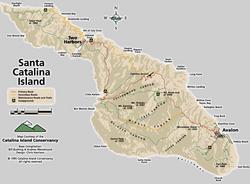 Around 9:45 on the night of October 23, while attending an overnight event at the Boy Scouts' Camp Emerald Bay on Santa Catalina Island, Karl Tso, KI6PCW, and his wife, Deborah Ava, KJ6CRZ, of Topanga, California, decided to climb a hill to check out the view -- and to see if they could get into the repeater on the island with their handheld transceivers. As they climbed the hill, the two radio amateurs heard a sound; Tso turned his high-powered flashlight on the source, only to discover a man who had fallen 48 feet to the rocks below, bleeding and severely injured. Read
Around 9:45 on the night of October 23, while attending an overnight event at the Boy Scouts' Camp Emerald Bay on Santa Catalina Island, Karl Tso, KI6PCW, and his wife, Deborah Ava, KJ6CRZ, of Topanga, California, decided to climb a hill to check out the view -- and to see if they could get into the repeater on the island with their handheld transceivers. As they climbed the hill, the two radio amateurs heard a sound; Tso turned his high-powered flashlight on the source, only to discover a man who had fallen 48 feet to the rocks below, bleeding and severely injured. Read 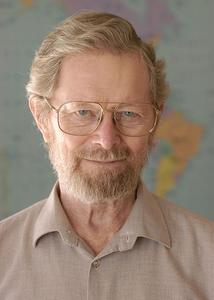
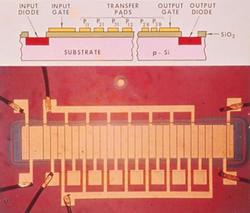
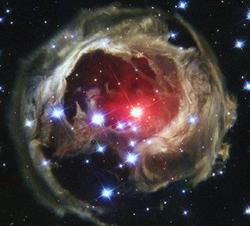
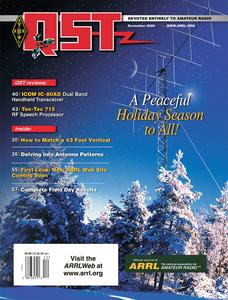 The December issue of
The December issue of  Earlier this year, the Consumer Electronics Association (CEA) named 13 men -- including three radio amateurs -- to the Consumer Electronics Hall of Fame. The honorees were inducted last month at CEA's Industry Forum in Phoenix, Arizona. Former ARRL Rocky Mountain Division Director Walt Stinson, W0CP, of Englewood, Colorado; Former ARRL Vice President and Central Division Director R.H.G. Mathews, W9ZN (ex-9ZN) (SK), and Karl Hassel, W9PXW (ex-8AKG) (SK). Read more
Earlier this year, the Consumer Electronics Association (CEA) named 13 men -- including three radio amateurs -- to the Consumer Electronics Hall of Fame. The honorees were inducted last month at CEA's Industry Forum in Phoenix, Arizona. Former ARRL Rocky Mountain Division Director Walt Stinson, W0CP, of Englewood, Colorado; Former ARRL Vice President and Central Division Director R.H.G. Mathews, W9ZN (ex-9ZN) (SK), and Karl Hassel, W9PXW (ex-8AKG) (SK). Read more 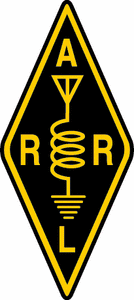 This feature -- including convenient Web links to useful information -- is a concise monthly update of some of the things ARRL is doing on behalf of its members, such as a recent webinar concerning Amateur Radio and pecuniary interests, the Fourth Annual ARRL On-Line Auction, orientation for newly elected Section Managers and more. This installment covers the month of October. Read more
This feature -- including convenient Web links to useful information -- is a concise monthly update of some of the things ARRL is doing on behalf of its members, such as a recent webinar concerning Amateur Radio and pecuniary interests, the Fourth Annual ARRL On-Line Auction, orientation for newly elected Section Managers and more. This installment covers the month of October. Read more 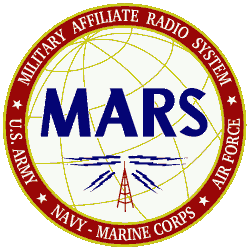 A military institution designed to provide emergency communications has moved to new quarters in the Pentagon. On October 21, John G. Grimes, the former Assistant Secretary of Defense for Networks and Information Integration, cut the ribbon on the new Military Affiliate Radio System (MARS) station, now located on the fifth floor of the Pentagon. The facility -- manned by the Pentagon Amateur Radio Club (PARC) -- is packed with amateur radios, radiotelephone patches, computers and data links. "This is a great facility, manned totally by volunteers," Grimes told the crowd who came to see the new station. "It's a crucial capability for our country." Read more
A military institution designed to provide emergency communications has moved to new quarters in the Pentagon. On October 21, John G. Grimes, the former Assistant Secretary of Defense for Networks and Information Integration, cut the ribbon on the new Military Affiliate Radio System (MARS) station, now located on the fifth floor of the Pentagon. The facility -- manned by the Pentagon Amateur Radio Club (PARC) -- is packed with amateur radios, radiotelephone patches, computers and data links. "This is a great facility, manned totally by volunteers," Grimes told the crowd who came to see the new station. "It's a crucial capability for our country." Read more 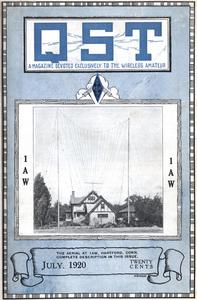
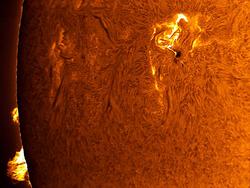 Tad "
Tad "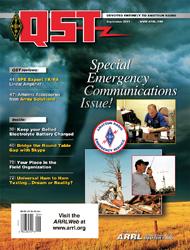 The winner of the QST Cover Plaque Award for October is John E. Portune, W6NBC, for his article "The Quadrifilar Helix as a 2 Meter Base Antenna Station." Congratulations John! The winner of the QST Cover Plaque award -- given to the author or authors of the best article in each issue -- is determined by a vote of ARRL members on the
The winner of the QST Cover Plaque Award for October is John E. Portune, W6NBC, for his article "The Quadrifilar Helix as a 2 Meter Base Antenna Station." Congratulations John! The winner of the QST Cover Plaque award -- given to the author or authors of the best article in each issue -- is determined by a vote of ARRL members on the 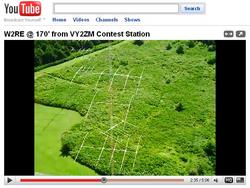
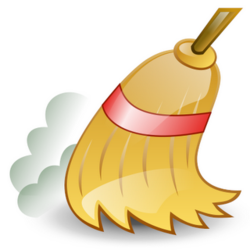 Last week, ARRL News Editor S. Khrystyne Keane, K1SFA, told ARRL Letter readers about the
Last week, ARRL News Editor S. Khrystyne Keane, K1SFA, told ARRL Letter readers about the  Registration remains open through Sunday, November 22, 2009, for these online course sessions beginning on Friday, December 4, 2009: Amateur Radio Emergency Communications Level 1; Antenna Modeling; Radio Frequency Interference; Antenna Design and Construction; Ham Radio (Technician) License Course; Propagation; Analog Electronics, and Digital Electronics. To learn more, visit the
Registration remains open through Sunday, November 22, 2009, for these online course sessions beginning on Friday, December 4, 2009: Amateur Radio Emergency Communications Level 1; Antenna Modeling; Radio Frequency Interference; Antenna Design and Construction; Ham Radio (Technician) License Course; Propagation; Analog Electronics, and Digital Electronics. To learn more, visit the 







